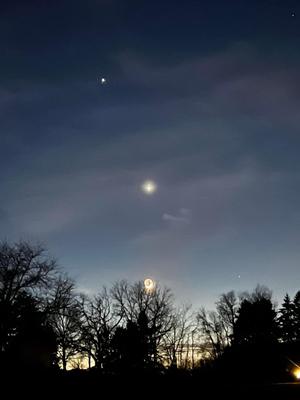Glossary term: 合
Description: 從地球上的觀測者的角度來看,當兩個天體在天空中看起來非常接近時,它們被稱為處於合相(合)。合相不一定是肉眼可見的——例如,每當新月時,月亮和太陽近似在一條直線上,但在此時,我們看不到月亮,除非發生日食。在這種情況下,或者兩個天體非常接近(合)以至於一個天體看起來遮住另一個天體時,天文學家就會將其描述為凌日或食。
Related Terms:
See this term in other languages
Term and definition status: The original definition of this term in English have been approved by a research astronomer and a teacher The translation of this term and its definition is still awaiting approval
This is an automated transliteration of the simplified Chinese translation of this term
The OAE Multilingual Glossary is a project of the IAU Office of Astronomy for Education (OAE) in collaboration with the IAU Office of Astronomy Outreach (OAO). The terms and definitions were chosen, written and reviewed by a collective effort from the OAE, the OAE Centers and Nodes, the OAE National Astronomy Education Coordinators (NAECs) and other volunteers. You can find a full list of credits here. All glossary terms and their definitions are released under a Creative Commons CC BY-4.0 license and should be credited to "IAU OAE".
If you notice a factual or translation error in this glossary term or definition then please get in touch.
Related Media
木星、金星、月亮合相
Credit: Joslynn Appel/IAU OAE (CC BY 4.0)
License: CC-BY-4.0 Creative Commons 姓名標示 4.0 國際 (CC BY 4.0) icons
月球-水星-昴星團相合
Credit: Giulio Colombo/ IAU OAE
License: CC-BY-4.0 Creative Commons 姓名標示 4.0 國際 (CC BY 4.0) icons










